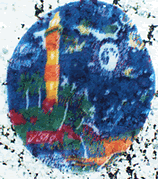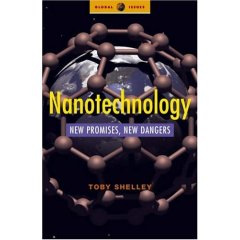From Small Times
Oxford Instruments to equip new UK lab
December 13, 2007 -- Oxford Instruments has received an order for nine process tool systems worth more than £2.5m ($5m) to equip a new cleanroom facility at the University of Southampton in the UK, the company announced in a news release.
The new Mountbatten research complex will serve the School of Electronics and Computer Science and the Optoelectronics Research Centre. Completion of the new building is anticipated for summer 2008.
The nine systems will provide the university with capabilities in research and development of novel nanoelectronic, MEMS and photonic devices. The order includes both plasma etch and deposition tools, with two Plasmalab System100 ICP etch tools, two Plasmalab80Plus open-loading RIE tools and two PlasmalabSystem100 PECVD tools, plus a number of Oxford Instruments' newest products: a FlexAL plasma/thermal atomic layer deposition (ALD) tool, a Nanofab nanowire and nanotube growth tool, and a large-chamber Ionfab ion beam system.
Nanostellar, World Gold pan for success in automotive catalysts
December 11, 2007 -- World Gold Council (WGC), the organization responsible for driving global demand for gold, and Nanostellar Inc., a developer of emission control technologies, have formed a partnership to introduce gold into the auto catalyst market.
The WGC has invested in Nanostellar to facilitate the commercialization and marketing of gold based technology that could increase industrial demand for gold.
Recently proclaimed a 2008 Technology Pioneer by the World Economic Forum, Nanostellar has developed a new product, NS Gold, a catalyst formulation for use in the automotive industry that for the first time includes gold alongside traditional platinum and palladium metals.
Gold enables manufacturers of light and heavy-duty diesel engines to reduce noxious emissions by as much as 40 percent more than existing pure platinum catalysts, enabling significant savings for automotive manufacturers, according to the WGC.
Indian nanotech students report no real classes
December 6, 2007 -- More than a year after the fanfare-filled launch of the National Center for Nanoscience and Nanotechnology at the University of Madras in India, its first 11 students are still waiting to receive a nanotech education, according to a report in the Indian newspaper The Hindu.
"From July to mid-September, we didn't have any class at all," the paper quoted one student as saying. "We were sitting under the trees, we didn't even have a classroom."
Another student told the paper that the center, which had promised to attract Nobel laureates, had not hired any staff.
The center has "drafted" a few staff members from other departments, but none of them are familiar with nanotechnology and are trying to teach the students based on Internet downloads.
"Not one professor is an expert in the nanotech field," one student told the paper.
Saudi Arabia announces plans for nanotech institute
December 3, 2007 -- Saudi Arabia's King Abdullah has approved a proposal to create a nanotechnology institute, which will be named after him, at a facility in Riyadh.
The institute will serve as an advanced technology research center for King Saud University.
"The future of the country depends on its youth, which in turn depends on human resources development," said Prince Naif in announcing King Abdullah's initiative. "The scientific community must exert more effort to train and qualify the Saudi youth."
Australian nanotech institute, Dow announce alliance
November 30, 2007 -- The University of Queensland's Australian Institute for Bioengineering and Nanotechnology (AIBN) and The Dow Chemical Company have announced a research alliance that will focus on two key areas: biomimicry and developing new manufacturing systems using biofeedstocks.
"Escalating oil costs and concerns about carbon dioxide emissions make it imperative to develop new manufacturing processes based on renewable substrates rather than diminishing fossil fuels," Peter Gray, AIBN's director, said in a news release.
"Scientific advances in the biosciences, have enabled researchers to genetically reprogram bacteria to produce the chemical building blocks of the future.
Andrew Liveris, Dow's chairman and CEO, said going back to nature was a further step forward in Dow's sustainable chemistry initiative.
"This alliance will help Dow to find more resource efficient ways to deliver even better products to markets and is a marvelous example of how the human element can work with nature to drive strategic growth at a company like Dow."
AIBN has more than 300 researchers housed in a new building complemented by an extensive suite of facilities.
Survey reports perceptions of nanotech impact by public, scientists
November 26, 2007 -- The unknown human health and environmental impacts of nanotechnology are a bigger worry for scientists than for the public, according to a new report published November 25 in the journal Nature Nanotechnology. Still, scientists worrying about negative potential are a minority among their peers.
The report was based on a national telephone survey of American households and a sampling of 363 leading U.S. nanotechnology scientists and engineers. It reveals that those with the most insight into nanotechnologies are unsure whether they might pose health and environmental problems.
"Scientists aren't saying there are problems," says the study's lead author Dietram Scheufele, a University of Wisconsin-Madison professor of life sciences communication and journalism. "They're saying, 'we don't know. The research hasn't been done.'"
The new findings are in stark contrast to controversies sparked by the advent of technologies of the past such as nuclear power and genetically modified foods, which scientists perceived as having lower risks than did the public.
At the root of the information disconnect, explains Scheufele, who conducted the survey with Elizabeth Corley at Arizona State University, is that nanotechnology is only now starting to emerge on the nation's policy agenda. "In the long run, this information disconnect could undermine public support for federal funding in certain areas of nanotechnology research," says Corley.
"Nanotechnology is starting to emerge on the policy agenda, but with the public, it's not on their radar," says Scheufele. "That's where we have the largest communication gap."
While scientists are generally optimistic about the potential benefits of nanotechnology, they expressed significantly more concern about pollution and new health problems related to the technology. Potential health problems were in fact the highest rated concern among scientists, Scheufele notes. Twenty percent of the scientists responding to the survey indicated a concern that new forms of nanotechnology pollution may emerge, while only 15 percent of the public thought that might be a problem. More than 30 percent of scientists expressed concern that human health may be at risk from the technology, while just 20 percent of the public held such fears.
Of more concern to the American public, according to the Nature Nanotechnology report, are a potential loss of privacy from tiny new surveillance devices and the loss of more U.S jobs. Those fears were less of a concern for scientists.
While scientists wonder about the health and environmental implications of the new technology, their ability to spark public conversation seems to be limited, Scheufele says. "Scientists tend to treat communication as an afterthought. They're often not working with social scientists, industry or interest groups to build a channel to the public," he says.
The good news for scientists, Scheufele explains, is that of all sources of nanotechnology information, they are the most trusted by the public.
"I think the public wants to know more. The applications are out there and that concern gap has to be addressed," Scheufele argues. "The climate for having that discourse is perfect. There is definitely a huge opportunity for scientists to communicate with a public who trusts them."
Monday, 17 December 2007
Nanotech Week World News in Brief
Posted by
P. M. Earl
at
Monday, December 17, 2007
![]()
Subscribe to:
Post Comments (Atom)







No comments:
Post a Comment